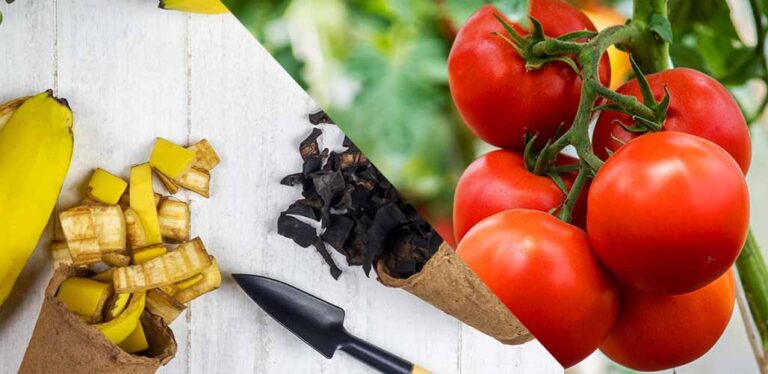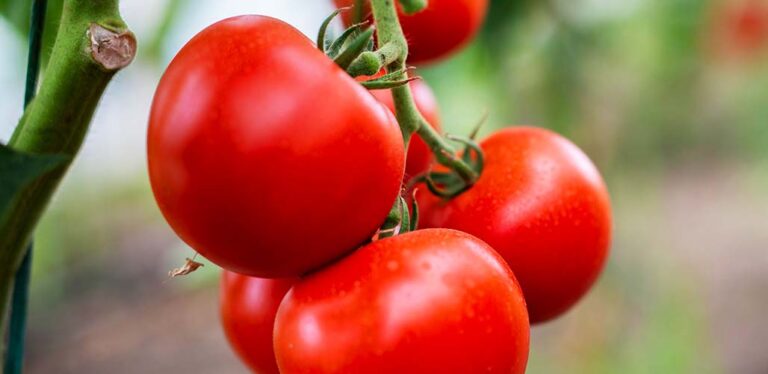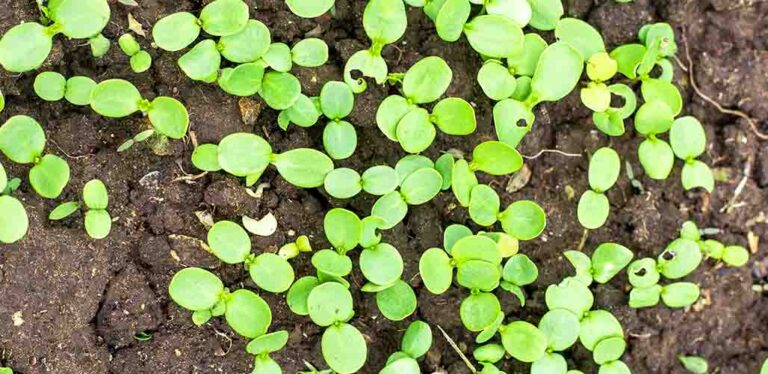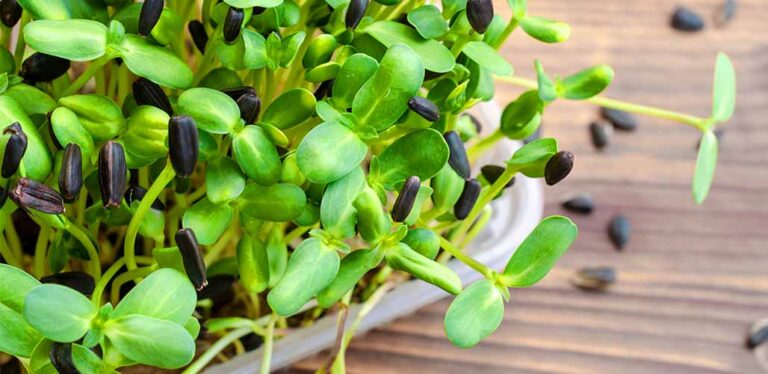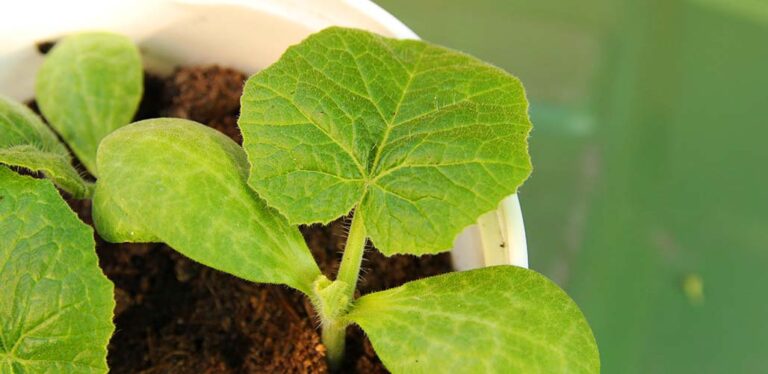When To Transplant Tomato Seedlings
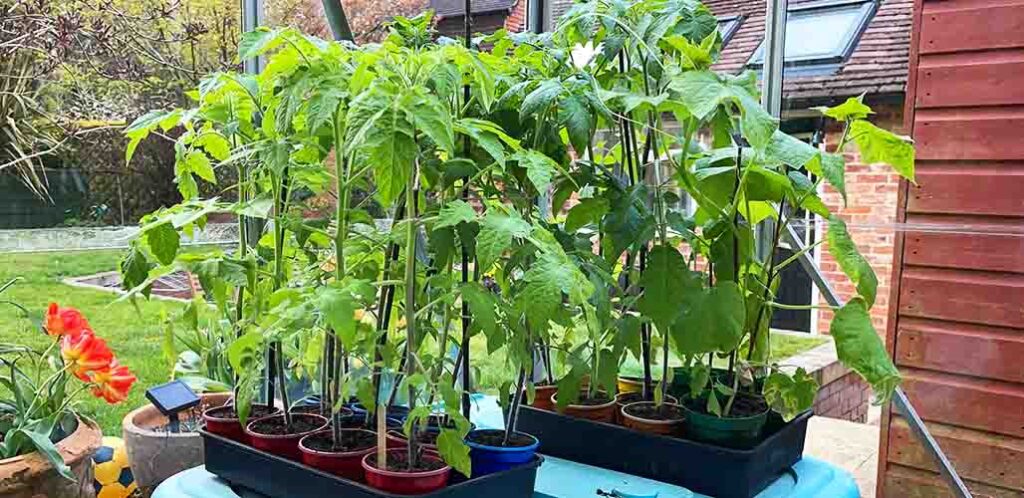
Welcome to our complete guide to transplanting tomato plants from seed tray to pot, and from that pot to their final home. We’ll look at why transplanting seedlings is an important part of growing them on, when to move tomatoes outside, and how to look after them at every stage, for bigger, quicker crops.
Contents
- Why transplanting tomato seedlings is a good idea
- When to transplant tomato seedlings from seed tray to pot
- When to transplant tomato seedlings to bigger pots
- The final move: when to plant tomato plants outside
- Caring for transplanted tomato plant seedlings
Tomato seedlings need transplanting from their seed trays into 3” pots when their first true leaves are big enough to handle. If you’ve timed it right, they can then go straight from those pots to their final location, as soon as the weather is warm enough. But if you sowed your seeds very early, or you’re caught out by a late cold snap, you might need to pot them on once in between as well.
In this video no-dig gardener Charles Dowding talks about the importance of timing when it comes to transplanting tomato seedlings. Let’s see how that applies to transplanting them.
Why transplanting tomato seedlings is a good idea
Starting tomato seeds in seed trays and transplanting them into small pots before finally planting them in their final location is a well-established routine for any tomato grower. Since most of us grow tomatoes in a climate which is far removed from the one they originally adapted to, this sequence of transplanting tomato seedlings makes it possible for us to provide optimum growing conditions at each growing stage.
Wild tomato plants were originally native to Ecuador and Peru, on the west coast of South America. As a result, they’re adapted to thrive in a long, warm growing season. And the seeds need to reach temperatures of at least 50f and ideally 65-85f just to germinate. For those of us in more northerly regions, if we waited until night time soil temperatures reached those thresholds, there simply wouldn’t be enough of the growing season left. And our plants would never reach the point of bearing ripe fruit.
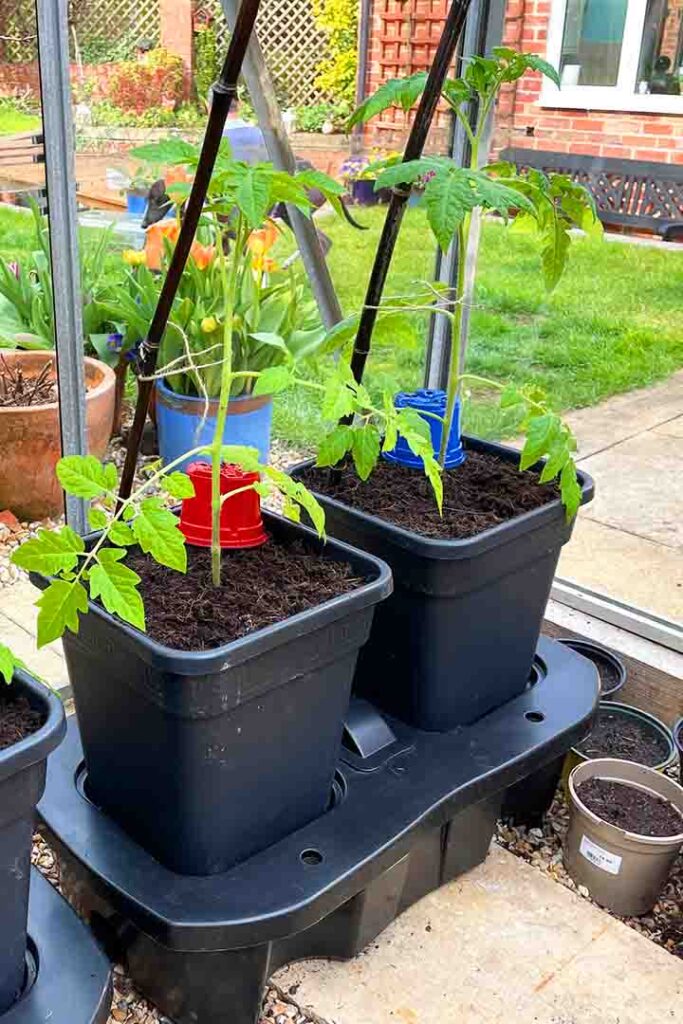
More advantages of transplanting seedlings
Sowing tomato seeds in seed trays and potting them on also helps us to grow more efficiently. No plant seeds have a 100% germination rate, and some which do germinate will be weak and spindly. Sowing tomato seeds individually in large pots is a waste of space and potting compost – starting in seed trays and only potting on the strongest seedlings at each stage allows us to use our resources more efficiently, save money, and grow more crops!
Finally, adult tomato plants are greedy. Modern cultivars produce fruit many times bigger than the original wild tomato plants. It takes a lot of energy and nutrients to do that, but overly rich soil inhibits tomato seed germination. Starting seeds in a low-nutrient potting compost and transplanting them into a richer substrate later enables them to get started in ideal conditions, and produce the kinds of crops we want.
When to transplant tomato seedlings from seed tray to pot
Every tomato grower’s aim should be to try and sow their tomato seeds about 6 weeks before their final location will be ready to take them. If you’ll be moving them to a heated greenhouse, or you live somewhere very warm, you might be able to sow them as early as February. For unheated greenhouses, waiting til March or April might be more appropriate. And for outdoor tomato types, you might even need to wait until early May, so that all risk of frost has passed by the time you plant them outside.
Your seedlings are ready to transplant from the seed tray into individual 3” pots when their first true leaves are big enough to handle. The first two leaves a tomato plant produces are ‘seed leaves’ or cotyledon leaves. They are long and narrow with smooth edges. The true leaves are all the leaves which follow – they have serrated edges. At this stage, the plant is usually about 4” tall.
Tips for the first transplant
- Always handle your tomato seedling by their leaves, not their stem, when you transplant them. A bruised or broken leaf can be replaced by new growth, but a bruised or broken stem means the end of that plant.
- Nip the seed leaves off your seedlings with a pair of pruning scissors or clean fingernails – the plant doesn’t need them anymore. Then plant your seedling so the compost in their new pot comes almost to the point where the seed leaves were. The submerged stem will produce new roots to help anchor the seedling sturdily.
- Don’t worry if your seedlings seem to wilt right after being potted up. Tomato plants are notoriously melodramatic in this respect – just leave them be and they’ll stand up again in a few hours. Check in on them occasionally to make sure the wilted leaves haven’t stuck to the edges of the pot.
- To help your seedlings put on strong growth in their new pots, blow of them gently every day, or waft them with a baking sheet. This mimics the action of wind, and stimulates their stems to become more sturdy.
When to transplant tomato seedlings to bigger containers
In a perfect scenario, the next destination for your seedlings will be their final home – either in a large pot (at least 12″), or directly in the ground. But if you’re suddenly hit by cold weather, you haven’t had a chance to clean your greenhouse, or the ground isn’t prepared in time, you might need to pot them on again indoors. If your tomato seedling’s leaves start to turn yellow, it’s a sign that they have exhausted the nutrients in the 3” pot. If you can’t put them in their final location in the next few days, transplant them into 4” pots to buy yourself some time.
Why not transplant tomato seedlings into 4” pots to begin with though? Well there are a couple of reasons:
- Space. Whether you’re housing your seedlings on a sunny windowsill or under a grow lamp, using bigger pots means fewer will fit. Seedlings which end up too far from their light source will end up leggy and weak.
- An overly large volume of compost can end up acting like a sump, holding lots of water, and increasing the risk of seedlings damping off.
When should you transplant tomato seedlings into their final spot?
Tomato seedlings are ready to move outdoors when the night time temperatures in their final location are consistently above 50f. A greenhouse thermometer with a minimum temperature function is incredibly useful for judging this. Before planting out your toms, acclimatize them to the conditions in their new spot over a few days, in a process known as hardening off:
- On the first day, put your tray of seedlings in their final spot for a hour when they won’t be in full sun, and then bring them back indoors.
- The following day, leave them out for two or three hours.
- On days three and four, leave them out for several hours (at this point our working schedules mean that many of us have to put them out before we go to work, and bring them in when we get back).
- On days five and six, take them out first thing in the morning, and bring them back in just before you go to bed.
- And on day 7, leave them out all night, ready for transplanting into the ground or final pot as soon as you’re able.
Caring for transplanted tomato plant seedlings
Here are some things to think about when you plant your tomatoes into their final home:
- If a cold snap is forecast after you’ve planted your tomatoes, protect them with horticultural fleece.
- Cordon varieties like the ones in the video above grow tall and need supports. You can use string anchored under the root ball, tie their stems to bamboo canes, or even buy special spiral growth supports.
- Corden varieties will produce side shoots which sprout at 45 degrees between a leaf and the main stem. Nip them out to focus energy into the rest of the plant, and pinch out the growing tip when 4 or 5 flower stems have emerged.
- Start feeding your tomatoes as soon as the first fruit starts to set. You can feed once a week, use a more dilute feed every day, or even use capillary matting to supply a constant supply of food and water to the pot from a reservoir down below.
- Think about how you’re going to water your tomatoes. Damp soil around the base of the plant makes them vulnerable to diseases, especially blight. Watering from a saucer under the pot, or a terracotta olla (irrigation pot) buried in the ground next to the plant allows a protective dry crust to form on the soil surface.
- Water your toms evenly and regularly, and never let them dry out, to prevent the fruit splitting.
When to transplant tomato seedlings – summary
Tomato seedlings need transplanting from their seed tray to a 3″ pot when they are about 4″ tall and have enough true leaves to handle. They can be moved from that pot to their final location as soon as overnight temperatures are consistently above 50f. Tomato plants almost invariably wilt immediately after transplanting. This is normal, and they recover in a couple of hours or so.
When do you transplant tomato seedlings?
Have you worked out the perfect dates to transplant tomato seedlings in your region? Tell us where you live, and what your tomato growing calendar looks like in the comments box down below!
Don’t miss
- Tomato Plant Leaves Turning White
- 13 Basil Companion Plants To Plant Right Now
- How To Harvest Cilantro Without Killing The Plant
- Keeping Tomato Plants Warm Through Winter
- Caring for Green Beans Through the Winter
References
- Buckingham. Allotment Month by Month. Dorling Kindersley. 2009.
- Garner & Bjorkman. Mechanical Conditioning of Tomato Seedlings Improves Transplant Quality Without Deleterious Effects on Field Performance. HortScience. 1999.
- Hernandez-Herrera et al. Effect of liquid seaweed extracts on growth of tomato seedlings. Journal of Applied Phycology. 2014.
- Michigan State University Extension
- Souri & Bakhtiarizade. Biostimulation effects of rosemary essential oil on growth and nutrient uptake of tomato seedlings. Scientia Horticulturae. 2019.
- University of California Statewide Integrated Pest Management Program

